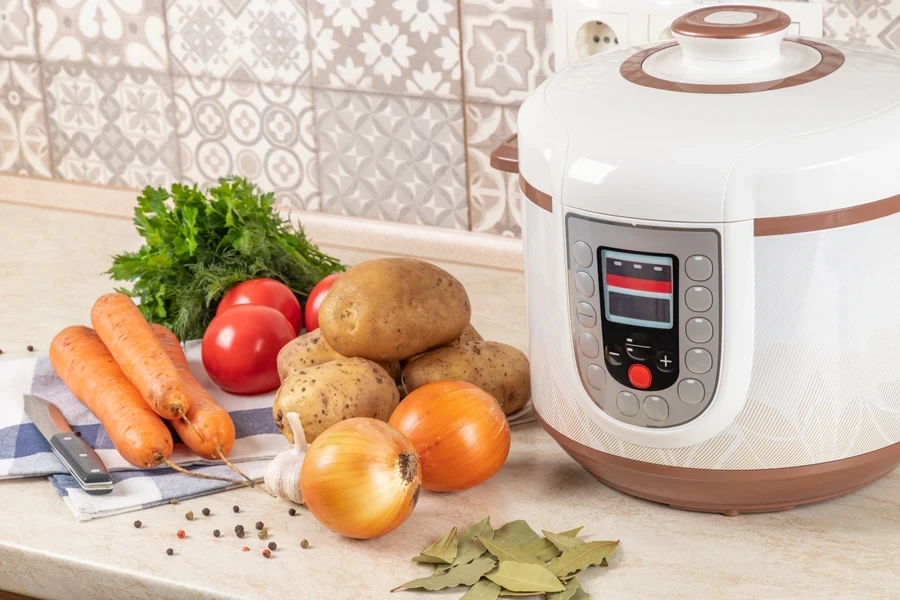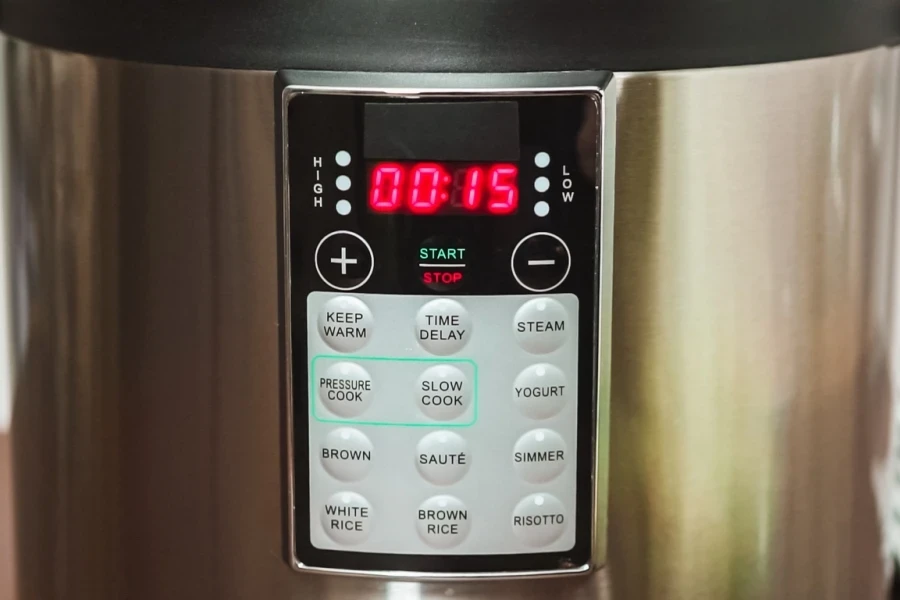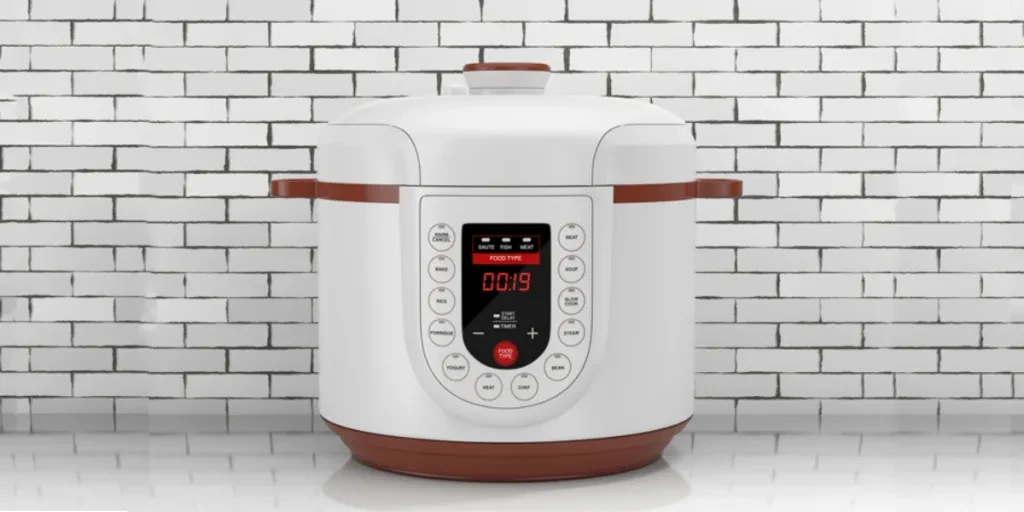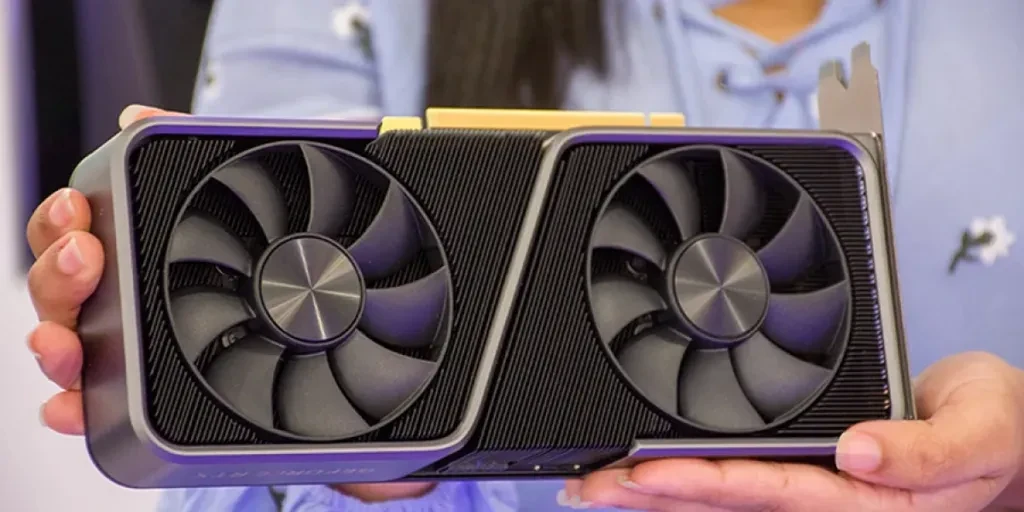Chances are that anyone who spends time in the kitchen (or even if they’re just a takeout connoisseur) has heard the buzz about multi cookers. Over the past few years, these handy appliances have popped up on countless countertops, sometimes even replacing older gadgets like slow cookers and rice cookers.
But what exactly is a multi cooker, and how can you tell which one your target consumers will buy quickly? This guide will explore multi cookers, their uses, and the key considerations to remember when stocking them in 2025.
Table of Contents
What is a multi cooker?
Why are they so popular?
The key functions to look for
1. Pressure cooking
2. Slow cooking
3. Sauté or Searing
4. Rice or grains
5. Extra features (yogurt, baking, sous vide, etc.)
4 factors to consider before stocking the right multi cooker
1. Size
2. Control panel and interface
3. Safety features
4. Build quality and materials
The bottom line
What is a multi cooker?

Think of a multi cooker as a kitchen’s ultimate helper—one smart pot that can handle all kinds of cooking. It’s like having several kitchen gadgets rolled into one, saving users time, space, and effort without needing to fire up the stove or oven. Here’s the cool part: multi cookers usually have a built-in control panel and a heating element.
This amazing feature means users don’t have to babysit the pot, constantly adjust the heat, or move things from pan to pan. They just toss in their ingredients, select the right setting, secure the lid (if they’re pressure cooking), and let the machine work. This is a serious time-saver for consumers with a tight schedule or who simply want dinner with minimal fuss.
Why are they so popular?
The appeal of multi cookers goes beyond mere convenience. Currently, Google data shows these appliances attracted 135,000 searches in February 2025—a 10% increase from an average of 110,000 in 2024. They’ve become hot commodities for a few reasons:
- Space savings: Instead of cluttering their kitchens with a slow cooker, a rice cooker, and a pressure cooker, consumers can replace them with one multi cooker. This space savings is huge if they live in an apartment or want to tidy their countertops.
- Efficiency: Most multi cookers, especially those with pressure-cooking functions, cook meals significantly faster than a slow cooker or stovetop method. Users can turn tough cuts of meat fork-tender in under an hour.
- Versatility: The variety of cooking modes (pressure cook, slow cook, sauté, steam, keep warm, etc.) allows consumers to tackle various recipes, from soups and stews to yogurt and cheesecake.
- Energy savings: multi cookers typically use less energy than an oven or a full stovetop because they concentrate heat in a smaller, enclosed space.
- User-friendly recipes: Thanks to the growing popularity of multi cookers, consumers can find countless recipes tailored to these appliances online, making it easier than ever to experiment.
The key functions to look for

When retailers start browsing multi cookers, they might notice these devices come with anywhere from a few pre-programmed settings to a dozen or more. Here are the main ones to watch for:
1. Pressure cooking
Pressure cooking is great for speeding up the cooking process. For example, a pot roast can go from tough to tender in about 45 minutes with pressure cooking instead of three to four hours in a standard oven.
A heads-up: Pressure cooking might seem intimidating to consumers new to it. However, modern multi cookers have built-in safety features that make it much simpler than it sounds.
2. Slow cooking
Even though consumers can cook things quickly under pressure, sometimes a recipe tastes better after a long, slow simmer—like pulled pork or chili. That’s why a slow-cooking mode is important.
A heads-up: If consumers are transitioning from a traditional slow cooker, they will check to see if the multi cooker slow cooker function runs at temperatures that match their current ones. Some run hotter or cooler than standalone slow cookers, so add that information to product descriptions.
3. Sauté or Searing
Some recipes say, “brown the meat on the stovetop before transferring it to your slow cooker.” However, with a sauté setting, consumers can do this step in their multi cookers, then switch to pressure or slow cook mode without dirtying a separate pan.
A heads-up: Consumers should know how hot the sauté mode gets. Some units are better suited for quickly browning food, while others might be better for softening onions or garlic.
4. Rice or grains
Many people buy multi cookers to replace their rice cookers—so if your target audience eats a lot of rice, quinoa, or other grains, stock models with reliable grain-cooking features.
A heads-up: Different models may yield different textures for rice (fluffy vs. sticky). Some consumers may want perfectly cooked rice, so make sure you advertise the rice or grains feature properly.
5. Extra features (yogurt, baking, sous vide, etc.)
Some models go above and beyond the basics. Yogurt-making has become a popular addition, and a few multi cookers even have sous vide or air-frying attachments. Here’s a list of additional features multi cookers can have:
- Air frying
- Dehydrate
- Steam
- Sous vide
A heads-up: Additional features might increase the price. To accommodate both sides of the market, offer an inventory of simpler, more budget-friendly, and feature-packed versions.
4 factors to consider before stocking the right multi cooker
1. Size

Multi cookers commonly range from 4 to 8 quarts (4 to 7 liters, sometimes even bigger). A smaller model may be enough if consumers cook for just one or two people. However, if you like having leftovers or you feed a larger family, aim for 6 quarts or more.
However, the cooking space in a multi cooker is usually a little smaller than advertised. Consumers also can’t fill it to the top, as food needs cooking room. So, inform buyers with a disclaimer or ensure the manual shows how much they can safely add.
2. Control panel and interface

A user-friendly control panel can save consumers from guesswork or frustration. They’ll love models with digital displays showing cooking times and modes. If your consumers are shopping in person, consider setting up a display mode so they can press the buttons or turn the knob (if it has one) to see if everything feels intuitive. If they’re buying online, offer them a peek at the user manual or a quick demo video.
3. Safety features

Multi cookers, even modern electric ones, can be intimidating if consumers have never used one. If they are new, offer them options with lids that lock into place and won’t open until pressure (if pressure cooking) is fully released, along with intuitive release valves.
Additional tip: Automatic shut-off and a delay start feature can also be nice perks. They offer peace of mind if consumers cook while away from the kitchen.
4. Build quality and materials
Most multi cookers have an inner pot made of stainless steel or non-stick. Stainless steel is sturdy and can handle metal utensils, while non-stick coatings are easier to clean (but may require more gentle care). Retailers can also offer ceramic-coated pots with the same benefits as non-stick coatings.
Maintenance note: Before choosing a material, check that it’s dishwasher-safe. Consumers will see this feature as a huge time-saver.
The bottom line
A multi cooker can be a huge asset to any kitchen. It saves time, frees space, and opens new cooking possibilities. Whether consumers are experienced home chefs or just starting, picking the right multi cooker mostly comes down to identifying what features matter most to them—capacity, user interface, safety, or special modes like yogurt-making.
Once they find one that meets their criteria, they will experiment. Retailers only have to ensure that they have what consumers want, and they’ll enjoy a piece of this trendy kitchen product.




